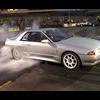New Engine Blown Up At Tuners
Announcements
-
Similar Content
-
Latest Posts
-
What are your plans for your blow off valves? Purely plumb back? How soft will the spring in them be? AFM can be tricky to get super smooth and nice, especially depending on the rest of the system, and then can be very easily upset if something slightly changes. IE, even if you run recirc blow off valves, you could still see issues getting it to behave at certain load points as turbos might start to spool, but you release the throttle but it's not enough pressure to crack the bov open to recirc, and you can end up with reversion which can cause double metering, and hence dumping of fuel into the system, and stalling the engine. If you're going to run a map sensor for closed loop boost control from the ECU, what makes you want to keep the AFM?
-
By Dose Pipe Sutututu · Posted
It's not bad, it's just not flexible. And say if you have any leaks between the MAF and plenum, well then your load axis goes out the window. Here's a real world scenario, I blew off an intercooler hose last track day, as the clamp decided to Bluetooth itself somewhere. Still continued to do 2 laps and drive it to the pub for a couple of beers then home. Good luck doing that with a MAF setup -
By joshuaho96 · Posted
Is MAF load really that bad? I'm not trying to do big power, my only real desire is VCAM and flex fuel support so I'm not terrified of blowing my engine apart from CA's appalling 95 RON "premium" fuel. Stuff like playing with closed loop boost control and really dialing in my transient fueling and ignition are frankly just to prove to myself I remembered something from uni. -
By PotatoCake · Posted
Thats what ive been doing. Ive got a million questions but i know theyve probably all been answered before at some stage. Todays research included nismo heritage seat covers, s3 projector headlight retrofits and how to remove/paint the rocker covers
-





Recommended Posts
Create an account or sign in to comment
You need to be a member in order to leave a comment
Create an account
Sign up for a new account in our community. It's easy!
Register a new accountSign in
Already have an account? Sign in here.
Sign In Now